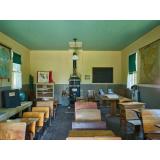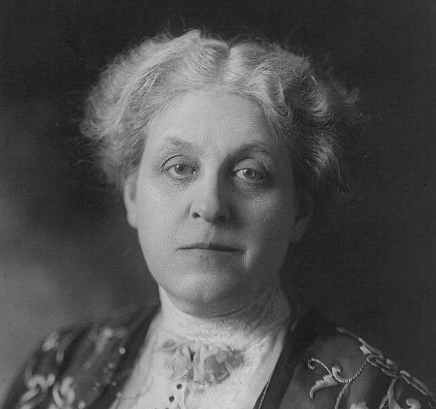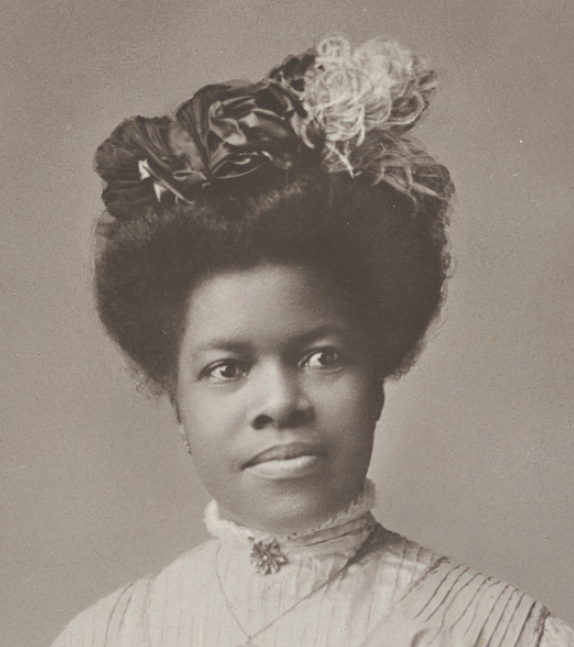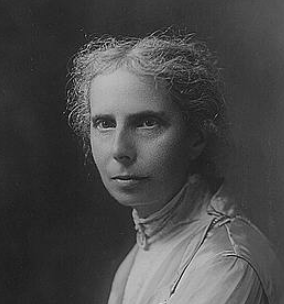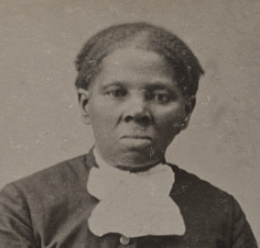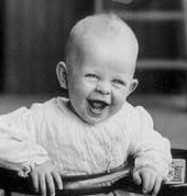A new study out questioned K-12 museum-going parents and educators about curriculum in their schools -- how happy or unhappy they are with it and how museums are perceived as being integral to the educational process.
I am ALWAYS advocating for educators to reach out to their local and regional (even national) museums for help with primary sources in the classroom. Here is why!
As a museum professional, I can help YOU make contact with the museums in your area or point you to where the primary source repositories are in your state. You can send me a private message with the little envelope icon at the top of the task bar!

The Moment Music Stood Still: The Nova Music Festival Exhibition is a powerful memorial dedicated to the lives lost and forever changed at the Nova Music Festival in Re’im Israel on October 7, 2023.
The traveling exhibition opened in Tel Aviv in December 2023 and has since been viewed in New York City, Los Angeles, Philadelphia and Detroit where I recently was privileged to see it. The exhibition travels next to Miami.
Through a primary source collection of remnants and personal artifacts salvaged from the festival grounds, as well as video testimonies and written first-person accounts, visitors are invited to experience the stories, memories and messages of those who were present at the festival.
The Detroit pop-up exhibit centers around a unifying call from survivors: “We will dance again,” and serves as a testament to both the vibrancy of life before the tragedy and the strength that emerges in its aftermath.
The exhibition website provides press coverage, including a very powerful CBS Sunday Morning segment. Due to security measures, an upcoming schedule is not readily available but there is an option to sign up via email for a NOVA Newsletter.
If you have already viewed the exhibition or are able to attend in the coming months, please share your impressions.
May the exhibition continue to serve as an enduring memorial enabling viewers to “bear witness” to the events that occurred on that day and to look with hope and healing toward the future.
Nova Music Festival Israel–Hamas war Museum exhibitions Difficult Topics
Consortium Partner Local Learning have developed a learning packet on Mount St. Helens using oral histories from the Washington State Parks. It is designed for Museum Educators, but would be wonderful in the classroom too.
The packet includes primary sources, oral histories, worksheets, and graphic organizers.
3 - 5 6 - 8 9 - 12 13+ Social Studies/History Science volcano Washington Mount St. Helens museum
If the name "Amache" does not ring a bell to you, then you are not alone. It was a Japanese Interment Camp located near Granada, Colorado. People with the last names of Saito, Yasuda, and Hamamoto were suddenly rounded up in the weeks following the attack on Pearl Harbor and forced into camps in the most rural areas of the US -- all because they had Japanese ancestry.
Amache officially became America's newest National Historic Site. It will be preserved in perpetuity. The video linked here has a moving conversation with a woman who was a small child incarcerated at Amache. Many of the people who survived Amache moved into farming communities in eastern Colorado. Brighton has a number of Japanese-American families who had been at the camp.

https://www.loc.gov/item/2015632197/
The National Park Service Teaching with Historic Places is an excellent way to use our largest primary sources in new and creative ways. The NPS Website has an entire section on Japanese-American Incarceration.
Using the Project Zero True for Who Inquiry Strategy can help your students work through internment camp collections and oral histories.
The Ninomiya Family in their barracks at Amache

https://www.loc.gov/item/2023632674/
Japanese-American Veterans Association -- Michael Honda oral history collection
Granada Pioneer Japanese Language Newspaper
University of Denver Amache Reunion, 1998, Interviews
Densho Digital Repository for Japanese Internment Camp Primary Sources (search the name of the Internment Camp you are looking for)
3 - 5 6 - 8 9 - 12 13+ Social Studies/History Japanese Japanese-American Internment Internment Camp Teaching with Historic Places Colorado
World renowned artist, Faith Ringgold, has passed, leaving behind a powerful legacy of art. She was New York's own, and so many of the article below will come from New York Museums, and how her art had an impact. I have included the lessons from the various art institutions with an emphasis on The New York Times Learning Network, which has both a local and national perspective on Ringgold's considerable body of work.
The New York Times Learning Network has origins to MoMA's original Visual Thinking Curriculum (VTC) which has undergone a number of incarnations. I had the privilege of helping to launch the initial VTC so the questioning techniques and strategies are those I always enjoyed.
NYTimes: Faith Ringgold Dies at 93; Wove Black Life Into Quilts and Children’s Books
NYT Up Close: Faith Ringgold: 'Didn't Want People to Be Able to Look, and Look Away'
NYT – T Magazine feature article : – Why Faith Ringgold Makes Sure Her Pieces Bear Her Signature
NYT Art and Design: Faith Ringgold’s Path of Maximum Resistance
Guggenheim Museum: Artist Faith Ringgold Discusses "Tar Beach" on "Craft in America" - May 9, 2012
On the television series Craft in America, pioneering artist Faith Ringgold is interviewed at the Guggenheim about her life, her process, and her story …
The Guggenheim Museum: Ashley James on Faith Ringgold’s “Tar Beach”
Brooklyn Museum: Faith Ringgold
The Guardian: Art - Faith Ringgold: 'I'm not going to see riots and not paint them'
Faith Ringgold Chronology (from her site)
Faith Ringgold, quilt and visual artist, dies at 93 : NPR
Lesson Plans, Faith Ringgold
FREE Faith Ringgold Story Quilts, Grades 2-4 — VISIONARY ART COLLECTIVE
Faith Ringold matt museum lesson plans - Visionary Art Collective
Virtual Views: Faith Ringgold | MoMA
Five Photography Assignments That Invite You to Look Closely at the World
Pre K - 2 3 - 5 6 - 8 9 - 12 13+ Art/Music English/Language Arts Social Studies/History Faith Ringgold, Artist
The New York Times Learning Netowork MoMA Guggenheim Museum
Éirinn go Brách
Tyler Anbinder, professor emeritus at George Washington University, has a new book out entirely rooted in wonderful primary source materials. In Plentiful Country: The Great Potato Famine and the Making of Irish New York, the myth of the poverty-stricken Irish immigrant being a drain on American society is dispelled all because of a treasure trove of bank records. The records of the Emigrant Savings Bank, housed at the NY Public Library, show that even day laborers were averaging $150 in their savings accounts -- equivalent to about $6000 today!
How can primary sources be used to disprove other stereotypes?
Why is this set of data significant to American history?
What other primary sources can be combined with this bank data to get a clearer picture of the lives of Irish immigrants to America?
How are the reactions to the 19th century mass emigration of Irish to America similar to events happening today?
Irish Americans Free to Use and Reuse
Herald of the Times, and Rhode Islander, January 18, 1847 -- Famine!
The Irish Republic Newspaper, 1867-68, Chicago
Irish Colonists in New York, 1906
Where the blame lies, 1891 (anti-immigration cartoon)
Immigration Challenges for New Americans
Irish-Catholic Immigration to America
Immigrant Laborers in the Early 20th century, audio recording.
Irish Contributions to the American Culture
The Immigrant Experience: Down the Rabbit Hole
Only a small portion of the Emigrant Savings Bank Records have been digitized, but they are fascinating! The bank records span from 1841 through 1923.
Immigration: The Irish, New York, PBS Media
EPIC: The Irish Immigration Museum
Irish-American Heritage Museum
When America Despised the Irish: The 19th Century Refugee Crisis
3 - 5 6 - 8 9 - 12 13+ Social Studies/History museum Irish

I want to highlight the comments shared by our group member  Janice Warju
, who is a colleague at The Henry Ford Museum. DM her if you have questions about these amazing resources and how to incorporate them into your classroom.
Janice Warju
, who is a colleague at The Henry Ford Museum. DM her if you have questions about these amazing resources and how to incorporate them into your classroom.
Remember, Chronicling America has wonderful newspaper articles and ads to complement the Museum resources!
It's also worth a visit, if you want to go somewhere totally unexpected. The Henry Ford and the Edsel and Eleanor Ford Museums are like Disney for 20th century history nerds! Lots of gems in Michigan!
From Janice:
Happy to share this link to the new educator platform The Henry Ford has established to share educator resource guides, artifact spotlights, and professional development opportunities. We are continuing to build out the platform, but memberships are free for most of our opportunities.
https://inhub.thehenryford.org/
For those unfamiliar, we often hear that the assumption is we are a car museum. Well, we do have about 300 cars in our collection, and around 100 on display, but we also have 18 airplanes and half a dozen trains on display. We also have the only remaining Dymaxion House designed by Buckminster Fuller and the bus Rosa Parks was riding when she was arrested in December, 1955.
Membership has a free option and includes most of our opportunities for educators.
We often hear that many people think THF is just an automobile museum, and we do have about 300, with around 100 on display, but we also have 18 airplanes, half a dozen locomotives, and so much more. We have the only remaining Dymaxion House, designed by Buckminster Fuller, and the bus Rosa Parks was riding in December, 1955. And then, there is Greenfield Village and the Ford Rouge Factory Tour, so please reach out with any questions.
Pre K - 2 3 - 5 6 - 8 9 - 12 13+ Social Studies/History Technology Vocational/Technical Training
Good afternoon to all. Just joining the group as the Specialist, Learning Content Development for The Henry Ford, including the museum, Greenfield Village, and the Ford Rouge Factory Tour.
If your class would benefit from a conversation with the staff of one of these historic sites, please message me (the envelope icon at the top of the page). I can put you in touch with the right person.
Coronado Historic Site -- topics: Ancestral Pueblo History, Coronado's entry into New Mexico
Jemez Historic Site -- topics: Ancestral and Modern Pueblo, La Entrada, Catholic influences on the American Southwest
Fort Selden -- topics: El Camino Real, La Entrada, Buffalo Soldiers
Los Luceros -- topics: Spanish settlement north of Mexico - La Entrada and La Reconquista, Mary Cabot Wheelwright and "The New Women" of the American West, Churro sheep, the Livestock Reduction Act
Bosque Redondo -- topics: westward expansions effect on Native American tribes, Navajo history, Apache history, The Long Walk, the Livestock Reduction Act
Fort Stanton -- topics: western military history and the effect on Native American tribes
Lincoln Historic Site -- topics: Billy the Kid, the Lincoln County War, western history
Taylor-Mesilla House -- topics: John Paul Taylor, history and culture of the Southwest through art
Pre K - 2 3 - 5 6 - 8 9 - 12 13+ Social Studies/History Art/Music Navajo Apache military history westward expansion Spanish colonial Buffalo Soldiers
CodeSwitch, a podcast from NPR, just aired an amazing program with the audio recordings of the women who led the Montgomery Bus Boycott that began with Claudette Colvin's arrest and became a full-on movement with Rosa Park's arrest.
It's worth having your students listen to the entire 36 minute episode.
https://www.npr.org/2024/01/17/1197954608/the-women-who-masterminded-the-montgomery-bus-boycott
What did you hear that surprised you?
Were there things that happened prior to Rosa Parks' refusing to move that you had never heard before?
Why do you think women were so integral to the boycott?
How was Martin Luther King, Jr important to the boycott?
Look at contemporary resources -- how has Montgomery, Alabama changed since 1956? How has it resisted change?
Library Resources on the Boycott
The Bus Boycott: Rosa Parks Papers
Looking Back on the Bus Boycott blog post
Instructions to carpool drivers and passengers
Newspapers across the nation talking about the Boycott
Where Rosa Parks Waited for the Bus
Rita Dove and "On the Bus with Rosa Parks"
Museum Resources
Standing Up by Sitting Down E-learning
3 - 5 6 - 8 9 - 12 13+ Social Studies/History Black History Montogmey Bus Boycott Civil Rights
Testimonials
- I love that there is new info on the site daily!
- I had a wonderful time working with the Library of Congress and learning about all of the resources at my fingertips!
- The TPS Teachers Network has an equal exchange of ideas. You know it's not a place where you're being judged.
- My colleagues post incredibly fine resources and ideas....the caliber of the suggestions and resources make me feel that I take a lot from it. It's a takeaway. And I hope that I can give back as much as I get.
- Going into this school year, I have a fantastic new resource for my own instruction and to share with my colleagues!
- I am very glad that I discovered the TPS Teachers Network through RQI. Great resources can be hard to find out there on the internet!

